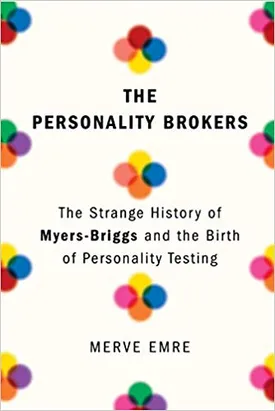The Personality Brokers: The Strange History of Myers-Briggs and the Birth of Personality Testing by Merve Emre
The Personality Brokers: The Strange History of Myers-Briggs and the Birth of Personality Testing by Merve Emre is the fascinating story of how influential, yet contested, psychological tool Myers-Briggs Type Indicator (MBTI) came to define the modern-day understanding of personalities. It is also the history of two remarkable American women, psychologically trained mother and daughter Katharine Cook Briggs and Isabel Briggs Myers, who shaped the widespread usage of the MBTI.
At the heart of Emre’s study is the background of the two women who became the pioneers in the world of personality assessment. Katharine Cook Briggs, or “Kit” as she was commonly called, was born in the late 1800s and was involved in the women’s suffrage movement throughout her life. She married a theology professor and became a mother to four children. Isabel Briggs Myers, or “Izzie” as she was affectionately called, was only a toddler when her mother began her professional journey with psychology. Izzie was a highly intelligent and curious child, absorbed by her mother’s intellectual pursuits.
The book digs into the creation of the MBTI by examining the path that the two women embarked on in order to develop their psychological tool. Emre paints a vivid account of the rigorous efforts that the Briggs and Myers undertook to build their psychological system and the struggles that they faced to gain acceptance in a strangely resistant, patriarchal, scientific landscape.
The pair of women began their journey by building on the work of Carl Jung and by studying and publishing various materials in order to better understand people’s personalities. Jung’s pre-existing theories of early personality assessment and the self-invented tools of the Myers and Briggs initially encountered resistance from the male-dominated academic world of psychology, as well as from deep-seated ideas that women’s observations were somehow inferior to those of their male counterparts.
One of the most interesting aspects of The Personality Brokers is the way that it so skillfully captures the power that the Myers-Briggs indicator had over the field of psychology and its implications in modern society.
Over time, the investigation of MBTI’s effectiveness and applicability yielded different and conflicting results, but its influence and reach shaped the modern view of personalities. By the end of the twentieth century, Myers-Briggs had achieved widespread usage not only in psychology but in fields as diverse as education and business.
Although Emre does not shy away from addressing the controversies that surged around the Myers-Briggs tool, her sympathetic account lets readers make up their own minds about the past and current status of the Myers-Briggs model. As she states: “Myers and Briggs faced both internal and external resistance to their project. How they continued and ultimately prospered against the odds is a remarkable chapter in the dispersal of their work and in the history of an idea that has now saturated our world. From boardrooms to beauty salons, Myers-Briggs has become the shorthand language for interpreting how people think and behave.”
In light of the far-reaching effects of the Myers-Briggs Type Indicator, Emre’s The Personality Brokers offers a thoughtful and factual look at the lives and careers of the two remarkable women who helped shape the modern-day understanding of personalities. It provides fascinating insights into both the creation and effects of the MBTI, and serves as an intriguing reflection of the capabilities of women in a deeply patriarchal world.

